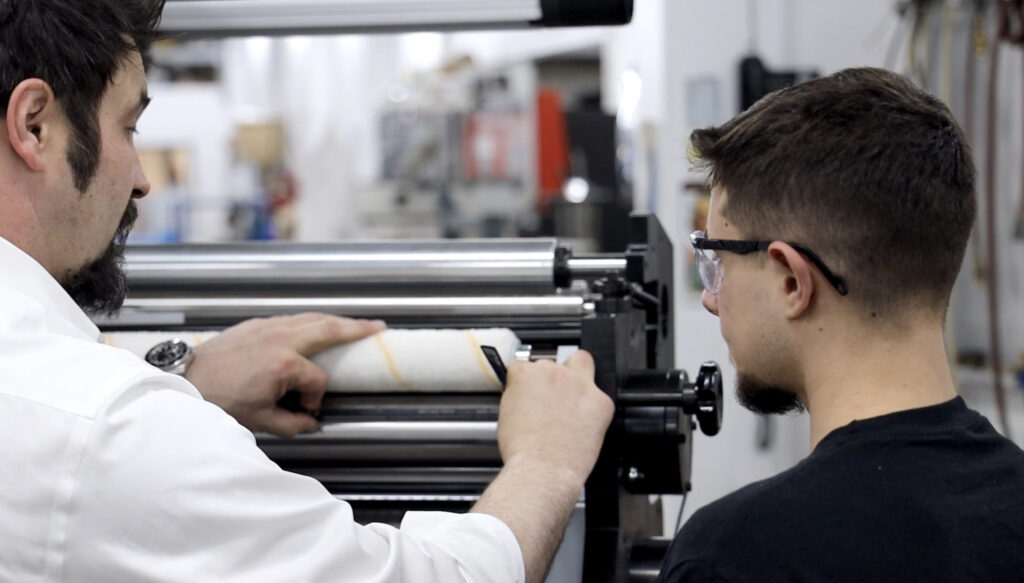Radio Frequency Identification (RFID) technology is wireless communication using radio waves to locate and identify objects. RFID is the general term that is used to describe the different standards and frequencies the system uses, including RAIN, which is supported by industry technologies.
RFID Technology Frequencies
RFID technology works by storing data on an RFID tag that is used to track assets, inventory, or warehouse management that is wirelessly read using a reader device. RFID technology is used by a variety of different industries, such as retail, pharmaceutical, anti-theft, shipping, IT products, and more.
There are three types of RFID systems: Low-frequency (LF), High-frequency (HF), and Ultra-high frequency (UHF). Low-frequency RFID uses the smallest bandwidth and has the shortest read range. LF is typically used in tracking animals or ticketing payments. High-frequency RFID has a larger read range and the ability to scan multiple items at once, but there are disadvantages associated with HF RFID as well.
RAIN RFID
RAIN RFID is also known as Ultra-high frequency RFID (UHF) and is a passive, wireless technology enabling consumers and businesses to find, identify, and authenticate each item that has been tagged using a RAIN RFID tag. RAIN RFID technology delivers accurate data in real-time and is most often used in applications such as tracking assets, inventory and warehouse management, and shipment verification.
The RAIN sector has taken over the RFID market and complies with the universal standard UHF Gen 2. With its advanced technological capabilities, RAIN RFID offers step-by-step tracking and management of goods, no matter the number of products being tracked.
RAIN RFID Capabilities
RAIN RFID’s capabilities include connecting anything from food items to clothing to pallets of goods, essentially digitizing the physical world through data sharing. Other benefits and capabilities of RAIN RFID include:
-
- Identify and locate up to 1,000 items per second
- A read range of just a few centimeters to 12 meters (40 feet)
- Locate items without being in line-of-sight
- Collect data to identify items more in-depth than only their product type
</ul >
Why Choose RAIN RFID?
RAIN RFID is a low-cost, flexible solution for how companies conduct business with advancing technology for a wide array of industries, from hospitality and retail to healthcare, IT, and manufacturing.
In addition to RAIN RFID being able to locate items quickly and accurately, it can also tell you what the item is and the current condition of the item. This innovative solution enables businesses to enhance customer experiences, increase sales, and increase operational efficiency on a global scale. This is a breakthrough.
Common Uses for RAIN RFID
Businesses typically use RAIN RFID technology as a fast, efficient means of locating, tracking, and authenticating items, pallets, or containers as they travel through warehouses, stores, supply chains, and hospitals.
Other common uses for RAIN RFID include:
-
-
-
- Anti-counterfeiting within the supply chain
- Anti-theft measures
- Offering transparency into their supply chain
- Identifying and locating dangerous or defective items
-
-
Tamarack® Products is recognized as an industry leader with over 50 years of experience in designing, engineering, and manufacturing high-quality web-finishing equipment. Our knowledgeable technicians can educate you on how integrating RFID technology into your business operations is both beneficial and cost-effective with an easy installation process. Tamarack’s® MVW Inline RFID inlay insertion equipment is servo-driven for easy installation and can be integrated into your existing or new Flexo press to create RFID labels, tags, and tickets in a single pass with operator-friendly controls.
Tamarack® Products provides customers with easy solutions with RFID technology from our completely scalable, modular, and customizable MVW Inline RFID inlay insertion system. Contact us to learn more about the many benefits of integrating RFID technology into your daily business operations.





